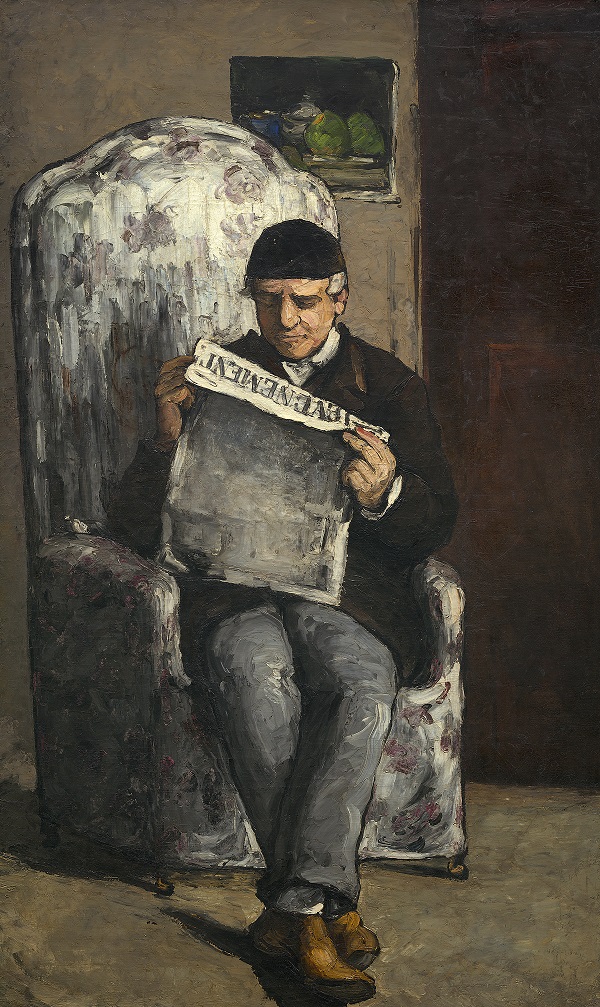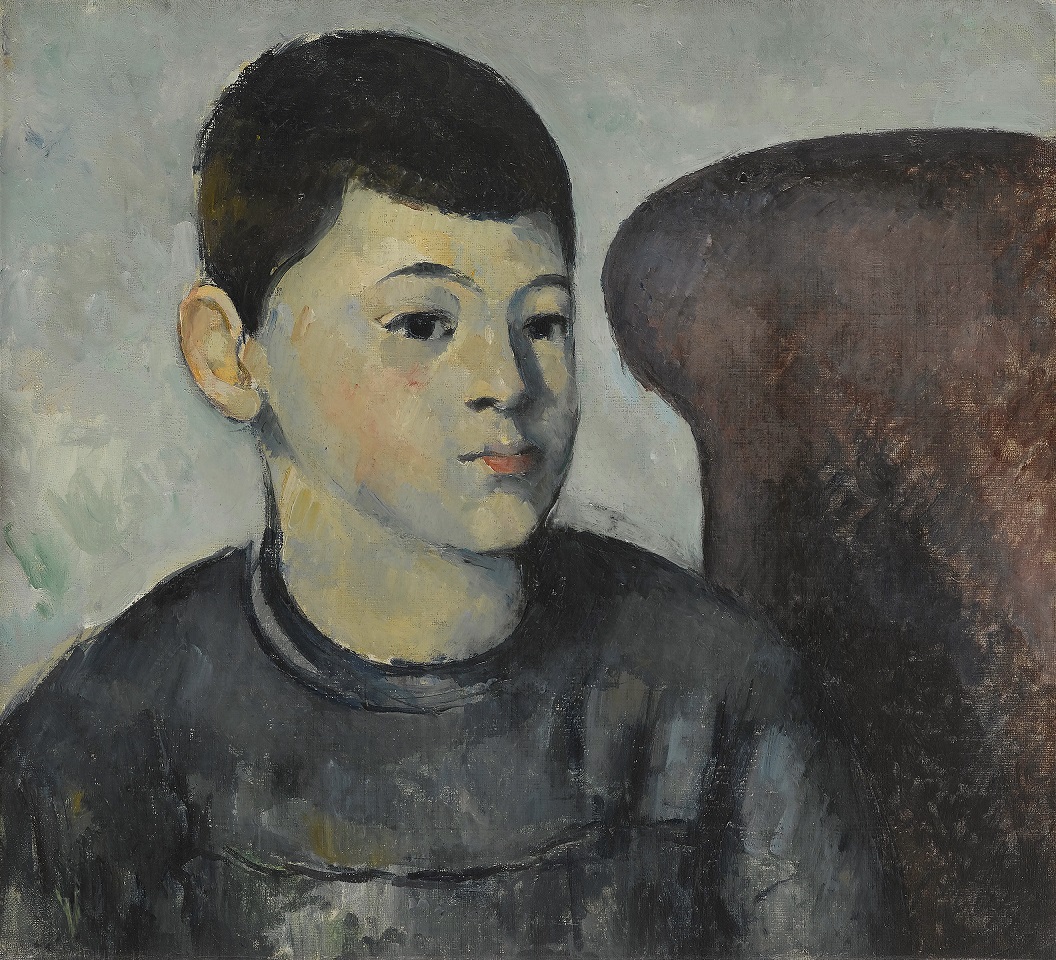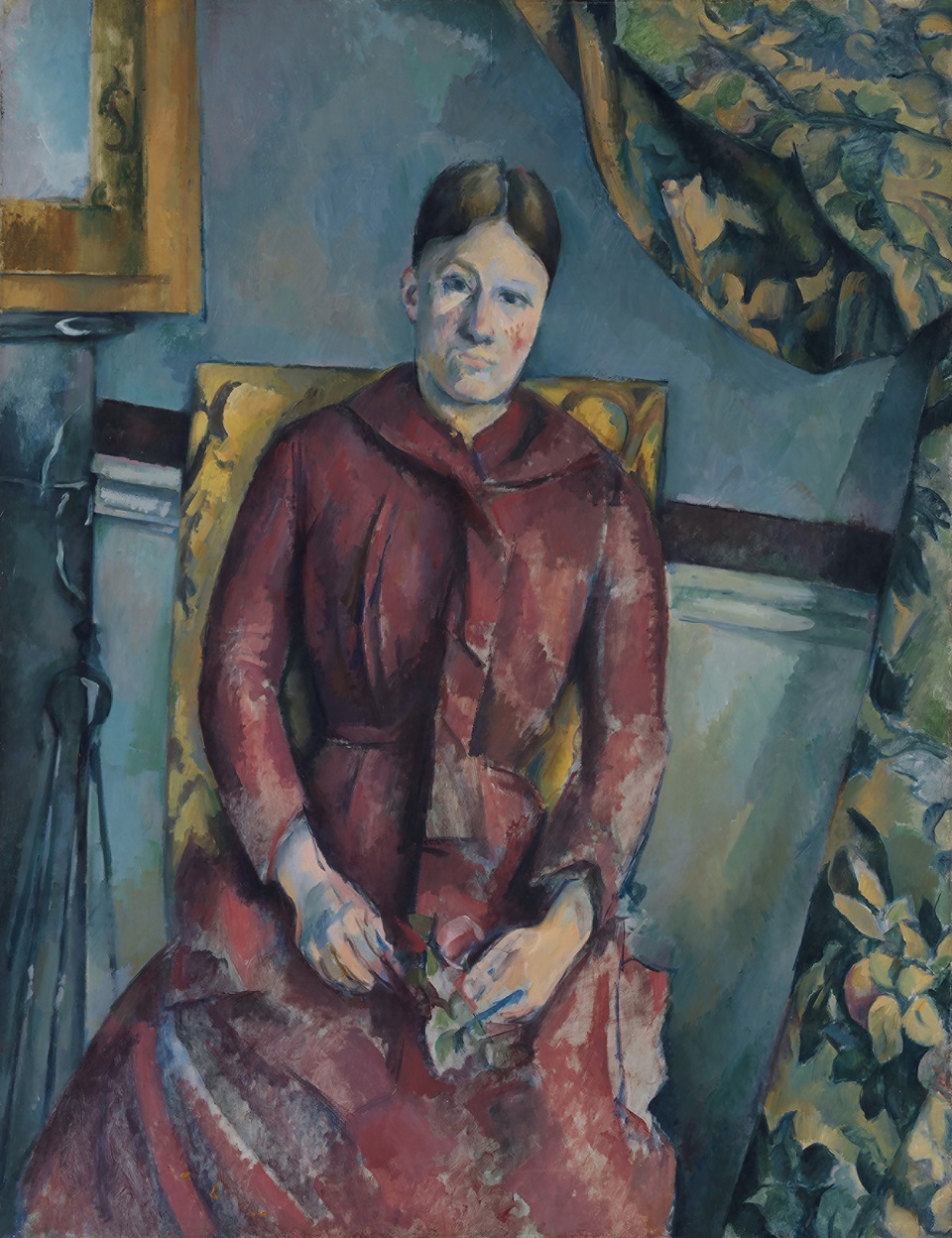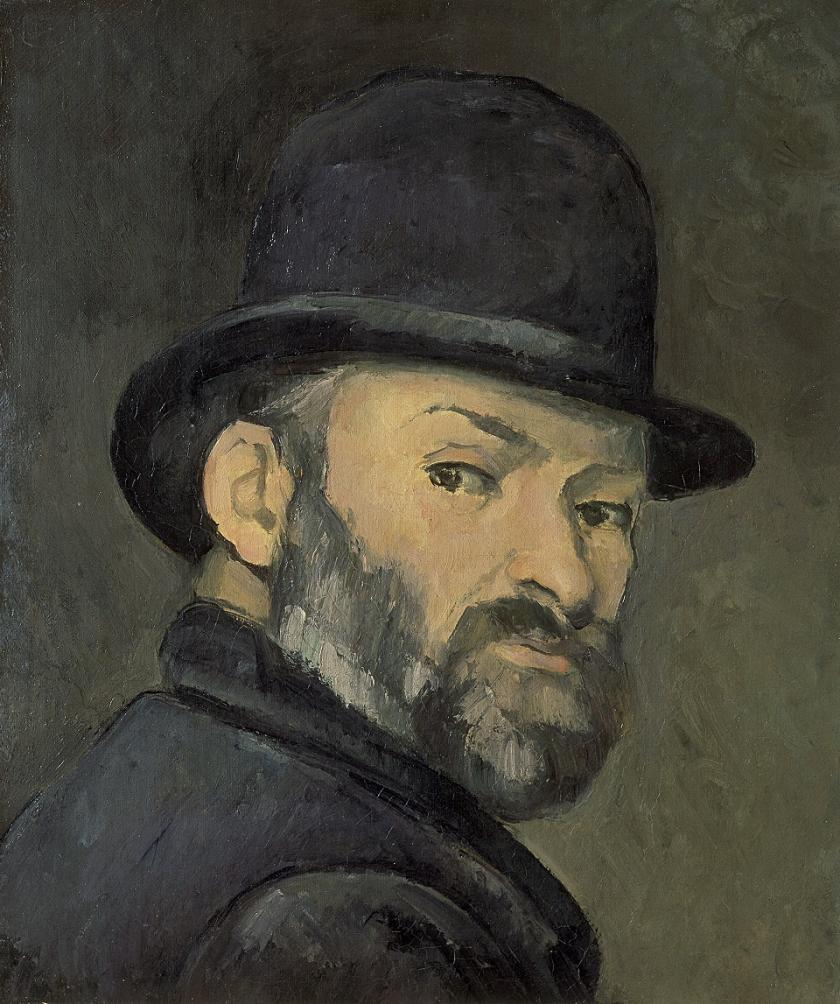Some 50 portraits by Paul Cézanne – almost a third of all those the artist painted that have survived – are on view in this quietly sensational exhibition. Eye-opening and heart-breaking, it examines his art exclusively in the context of his portrayal of people for the first time.
It is that proverbial once-in-a-lifetime show: half a dozen or so works have not been seen in public for decades, and several have never been shown in the UK. In microcosm, too, this selection shows us essential Cézanne: exactly what made him different from his peers as he took what, say, the Impressionists were doing, but using patches of colour in an entirely different way, not playing with light but with form.
 The early paintings are vibrant, even touched by a kind of violence in their sombre hues and thick pigment, parallel to the scenes of mythology and strong vignettes – an imaginary murder – he painted early on. But these early portraits also exhibit the dignity he granted all his subjects, from people to a bowl of apples.
The early paintings are vibrant, even touched by a kind of violence in their sombre hues and thick pigment, parallel to the scenes of mythology and strong vignettes – an imaginary murder – he painted early on. But these early portraits also exhibit the dignity he granted all his subjects, from people to a bowl of apples.
The selection is beautifully displayed in an exceptionally spacious setting. We are led from his first depictions of acquaintances, family – his parents, his uncle, a sister – friends, and then from the 1870s his softer images of Hortense, his model and mistress turned wife, and then to his exquisitely powerful images of artisans, peasants, family and friends in Provence, his home landscape to which he returned continually from his life in Paris.
The portraits move from an almost ferocious use of paint, carefully applied by the palette knife, to quieter brush-dependent compositions built like the most subtle building blocks of colour, almost seamlessly folding one into the other. There can be a quietly defiant wit, as in his early portrait of his father from 1866, the successful self-made banker reading a radical newspaper, tip-tilted in a chair, his confidence however ensuring equilibrium (pictured above, The Artist's Father, Reading "L'Evénement", National Gallery of Art, Washington). Cézanne senior wanted his son to study law, which Paul did, resentfully, until he managed to piece together his full-time life as an artist.
The results, especially when seen together like this, have an almost hallucinatory intensity that is readily communicated to the viewer, a mesmerising gaze on that depicted. The emotional quotient is immensely high. He demanded, and mostly received scores of sittings (or even more); thus it was easier for him to deal with family – notably indeed himself, in a sequence of revelatory self-portraits, images of Hortense, and rarely his son Paul – and the people he knew, workers and servants. He rarely painted people from the art world; he preferred notably to paint those he was interested in, rather than those who might be interested in him. (Pictured below, The Artist's Son, 1881-82, Musée de l'Orangerie, Paris)
 It has been commonplace to think of Cézanne’s dealings with people in art as in life as almost emotionally stunted, in the sense that people appear to him more like things, objects, as opposed to fellow humans. But major revisions have recently been taking place: for example, he remained in touch with Emile Zola, whose portrayal of Cézanne in a novel had been bitterly resented by its subject. His relationship with Hortense was of far greater attachment that has been hitherto supposed. What comes across is a striking emotional attachment, an affection growing organically from his determined gaze, his effort to get down what he saw. He is not a graceful painter but markedly persuasive.
It has been commonplace to think of Cézanne’s dealings with people in art as in life as almost emotionally stunted, in the sense that people appear to him more like things, objects, as opposed to fellow humans. But major revisions have recently been taking place: for example, he remained in touch with Emile Zola, whose portrayal of Cézanne in a novel had been bitterly resented by its subject. His relationship with Hortense was of far greater attachment that has been hitherto supposed. What comes across is a striking emotional attachment, an affection growing organically from his determined gaze, his effort to get down what he saw. He is not a graceful painter but markedly persuasive.
The focus exclusively on portraits is immersive in itself, and also in its journey through four decades of his work closely related to the quiet revolution in art that he pioneered. He was both part of the zeitgeist and, often isolated by choice but not alone (he was a terrific letter-writer), powering on with what mattered to him, outside of any mainstream.
 There are stories which illustrate his tenacity as much as his paintings do: depicting his dealer Ambroise Vollard, who made the careers of those innovative artists who were at first misunderstood and held in contempt, took at least 115 sittings. When he wanted to go on, the sitter begged him not to make any changes that would incur so many more sittings; evidently he was only satisfied with the shirtfront. It was left unfinished in the artist’s eyes. He rarely painted by request, but would offer, and the gentle affectionate portraits of his modest patron Victor Choquet are a tribute to friendship.
There are stories which illustrate his tenacity as much as his paintings do: depicting his dealer Ambroise Vollard, who made the careers of those innovative artists who were at first misunderstood and held in contempt, took at least 115 sittings. When he wanted to go on, the sitter begged him not to make any changes that would incur so many more sittings; evidently he was only satisfied with the shirtfront. It was left unfinished in the artist’s eyes. He rarely painted by request, but would offer, and the gentle affectionate portraits of his modest patron Victor Choquet are a tribute to friendship.
They can be tender and empathetic: there is his young son, Paul, to whom he was devoted; the young Italian who modelled for Boy in a Red Waistcoat. About a third of all the portraits he painted were of Hortense – 11 of them are here – her face paradoxically both impassive and full of feeling, hinting at a complex internal life only intermittingly visible. (Pictured above, Madame Cézanne in a Red Dress, 1888-90, lent by The Metropolitan Museum of Art)
The quietly surprising richness of colour, especially in his later paintings, is complex and satisfying, reds and light blues and greens enlivening ochres and earth colours. The artist said himself that he didn’t paint souls: “One paints bodies; and when the bodies are well painted…the soul, if there is one, of every part of the body shines and blazes through.” The sequence of self-portraits from the 1860s to 1900 are not melancholy as one might expect; sometimes they are even surprisingly jaunty, the artist in a bowler hat, in a beret. What is consistently compelling is the intensity of his gaze, replete with curiosity. What does the world look like? the paintings always seem to ask. Go and discover – and take your time.










![SEX MONEY RACE RELIGION [2016] by Gilbert and George. Installation shot of Gilbert & George 21ST CENTURY PICTURES Hayward Gallery](/sites/default/files/styles/thumbnail_125_x_125_/public/mastimages/Gilbert%20%26%20George_%2021ST%20CENTURY%20PICTURES.%20SEX%20MONEY%20RACE%20RELIGION%20%5B2016%5D.%20Photo_%20Mark%20Blower.%20Courtesy%20of%20the%20Gilbert%20%26%20George%20and%20the%20Hayward%20Gallery._0.jpg?itok=3oW-Y84i)




Add comment